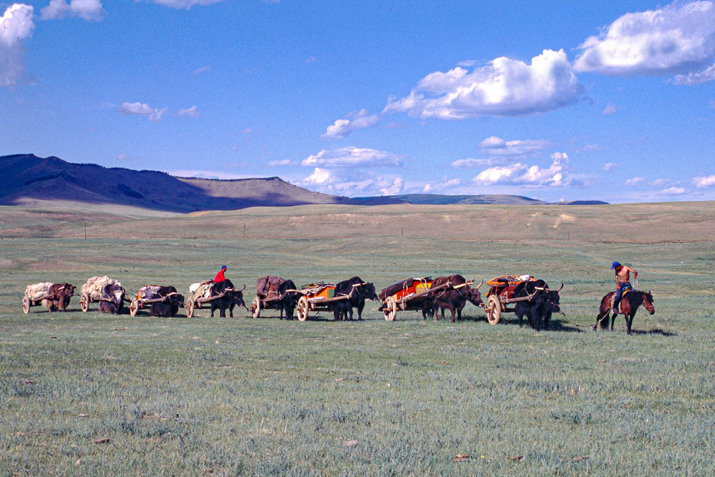
Wandan, chainsaw and wood supply
N 51°21'785'' E 099°21'046''
Day: 105-108
Sunrise:
08:23/08:28
Sunset:
17:48/17:43
Total kilometers:
1146
Soil condition:
Ice, snow
Temperature – Day (maximum):
minus 18°C
Temperature – day (minimum):
minus 27°C
Temperature – Night:
minus 27°C
Latitude:
51°21’785”
Longitude:
099°21’046”
Maximum height:
1475 m above sea level

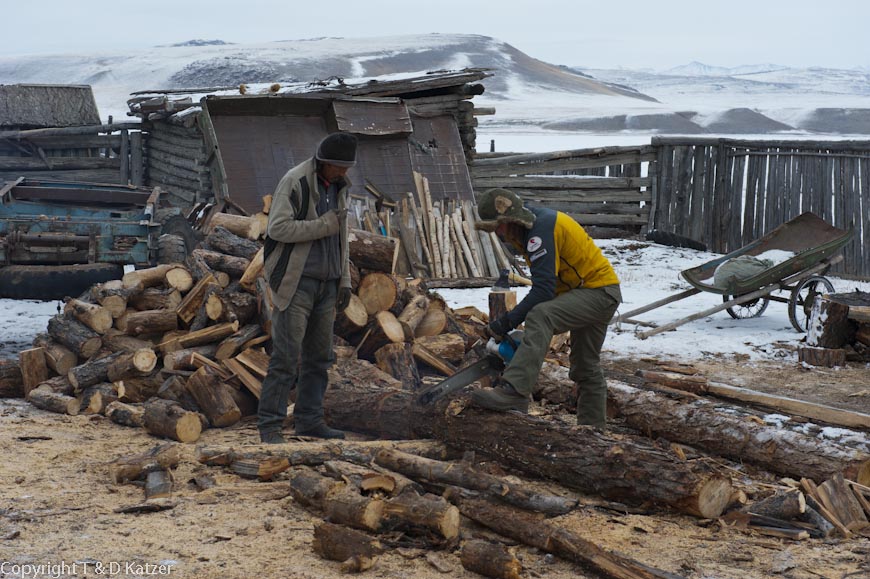
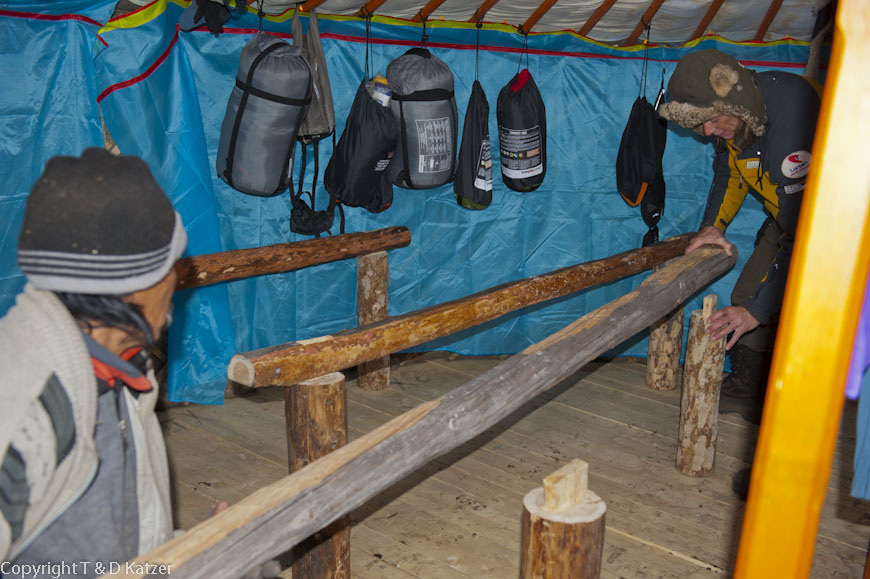
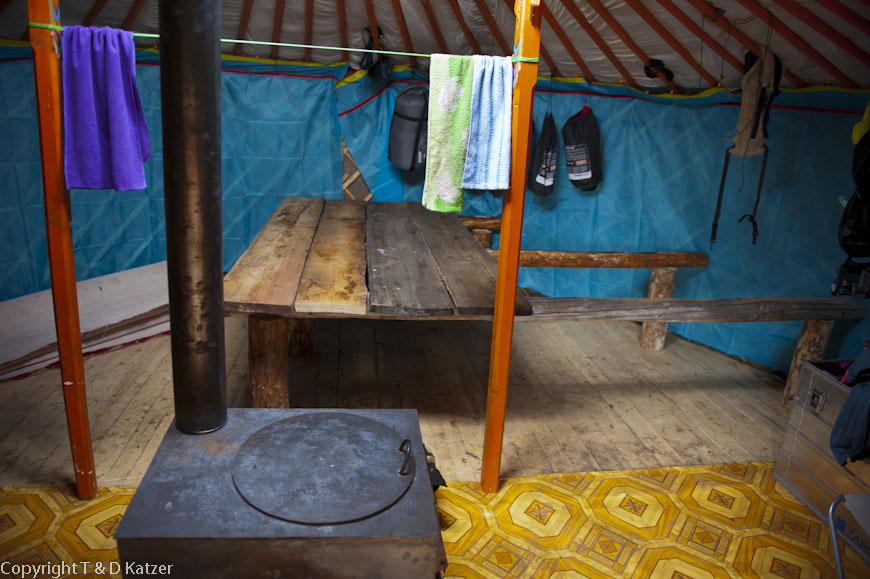
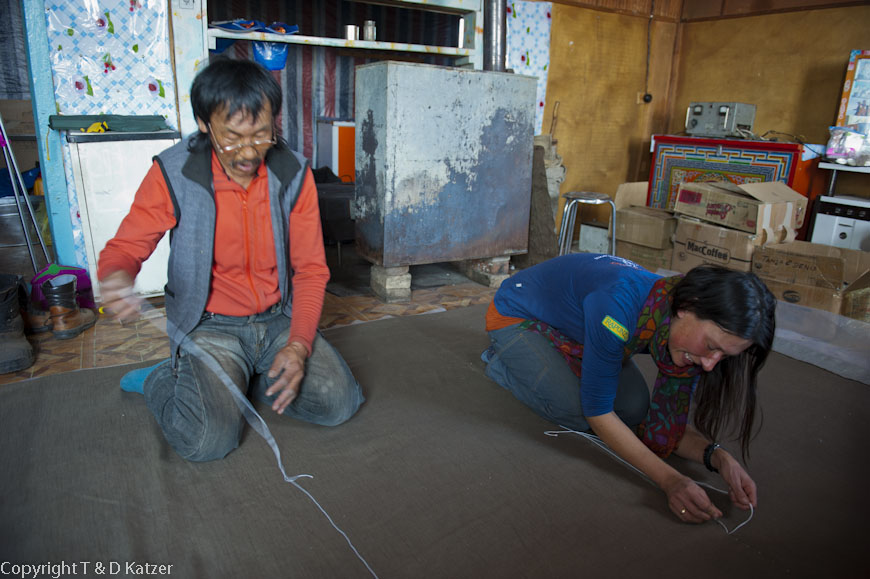
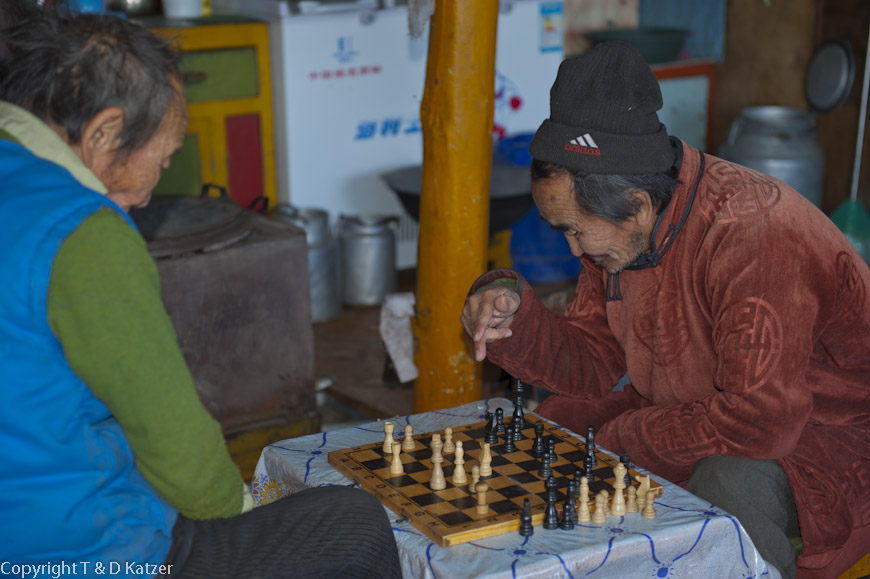
As at the beginning of our trip in Erdenet, then in Mörön for the stage to Tsagaan Nuur and now for the wintering period, preparations are once again in full swing. We are busy every day from morning to night. Tanja and Bilgee sew a felt mat to nail on the painted wooden door of the yurt. At the current temperatures of minus 25 °C to minus 35 °C, the cold eats through the wooden door. It’s almost as if we had left a window open. Bilgee also takes great care with the sewing work and teaches Tanja how to make such a door seal professionally.
Now that we have received our first truckload of firewood for the winter, we need gasoline and oil for the chainsaw to cut up the logs. “Bisch maslo (“No oil”). You can’t get it anywhere in the village,” says Bilgee as he returns from the settlement’s small petrol station. “The chainsaw won’t run without oil. What do we do now?” I ask. “I’ll check with the residents.” “With the residents? Do you think someone has engine oil?” I wonder. “That’s for sure. I’ll ask at least five people. One of them will sell me oil,” says Bilgee confidently. An hour later, he enters the yurt with a broad grin and holds out a beer bottle with half a liter of oil sloshing around in it. Once again Bilgee proves that anything is possible in Mongolia. Even the supposedly impossible is somehow made possible in some way. We immediately start to get the saw going. But how could it be otherwise? Without success. First it doesn’t start and then the chainring stops immediately when we want to saw a log. “It’s a Chinese saw. It first has to idle for a whole tank. Then the piston runs in and we can use it,” explains Bilgee confidently.
After the chainsaw has rattled away for a full tank, we can actually start work the following day. Bilgee spits in her hands and gets to work while Tanja and I run to the mayor’s office to introduce ourselves. “The mayor is not here today,” she is excused by a small man. “But please sit down,” he invites us to take a seat in a heated room. As he only speaks Mongolian, our communication is extremely limited. At least we find out that this man is the second mayor of Tsagaan Nuur. After we explain as best we can why we are here, he suggests we come back tomorrow. We say “Tschin setgeleesee bajrlalaa” (“Thank you very much”) and say goodbye.
In the evening, Bilgee managed to saw almost the entire load of wood into small pieces. “Man Bilgee, you’re a real working machine,” I praise with a laugh. Then we take refuge from the cold in our yurt. “Do you fancy a game of chess?” he asks me. “I’d love to. But I haven’t played for years. I’m certainly not a good opponent. Where did you learn to play chess?” I want to know. “From Ayush.” “Ayush plays chess?” I wonder. “He is a passionate chess player. This board game is good for shortening the long days and nights of winter,” explains Bilgee. Our first game doesn’t last long. Bilgee beat me mercilessly. The second game takes a little longer, but I’m still checkmate after an hour and a half. “Is there anything you can’t do?” I ask him, to which he laughs heartily. I can do almost nothing,” he replies modestly as always.
The next day, Bilgee shows me how to use the chainsaw. Since I have heard of terrible injuries, I honestly have a lot of respect for them. But if we want to survive a winter in the taiga, the safe use of a chainsaw and axe is part of everyday life. It doesn’t take long for me to saw up the first tree trunks. Then I start chopping wood to carry a supply into the yurt for tonight.
Bilgee has now cut the grooves into the three logs. We drag the six wooden legs and three logs into the yurt and insert the mortise and tenon joints of the legs into the grooves of the beams. Then we saw the boards to size and lay them across the beams. I screw the boards to the beams so that the construction of our loft bed doesn’t fall over. “A cordless screwdriver would be great,” I say, because after a short time I notice a blister on the heel of my hand. “Why don’t you nail the boards to the beams? That would be much easier, wouldn’t it?” asks Tanja. “When we dismantle the yurt and the Wandan in a few weeks’ time to rebuild everything at the Tsataans, screws are better. They’re easier to take apart,” I explain, putting a drop of oil on each screw to make my work easier.
Our loft bed is ready in the evening. We lay a carpet on top and cut it to size. Then we spread a large felt blanket over it, which Bilgee, with the help of Tsendmaa and Tanja, also sewed especially for the Wandan, and roll out our sleeping mats. “Perfect, simply perfect,” says Tanja, delighted with our bed. “Baihgui hujten”, (“No longer cold”) Bilgee also says cheerfully. “I’m going to sleep in the baishin (log cabin) tonight,” he says without hesitation. Although we don’t want Bilgee to move out immediately, he won’t let us stop him from sleeping in the baishin. “I can understand that. The Wandan is a real bed now and it would be strange if Bilgee slept in our bed. And who knows? Maybe he’ll be glad to have some peace and quiet after three months. Over in the log cabin, he can move around freely,” I say. “I haven’t even looked at it from that angle yet. I’m sure you’re right,” Tanja replies.
We are now alone in our yurt. Tanja has bought fish that I prepare. Bilgee comes later and we eat together. Then we sleep alone for the first time in our yurt on the Wandan. It is wonderful. Above all, the cold of the ground can no longer harm us.
We look forward to your comments!

